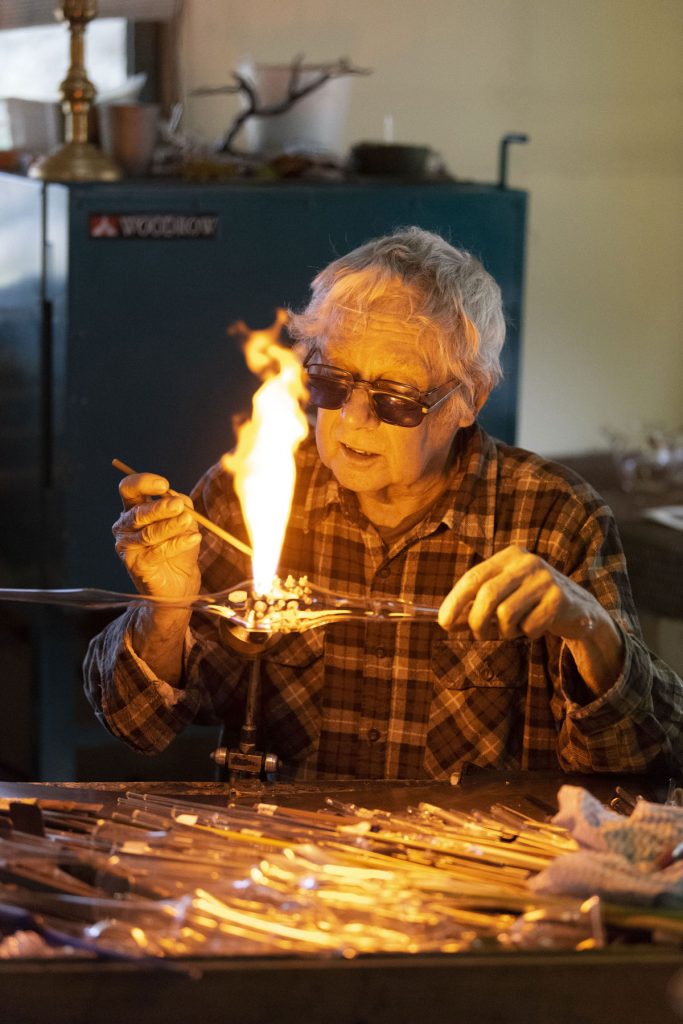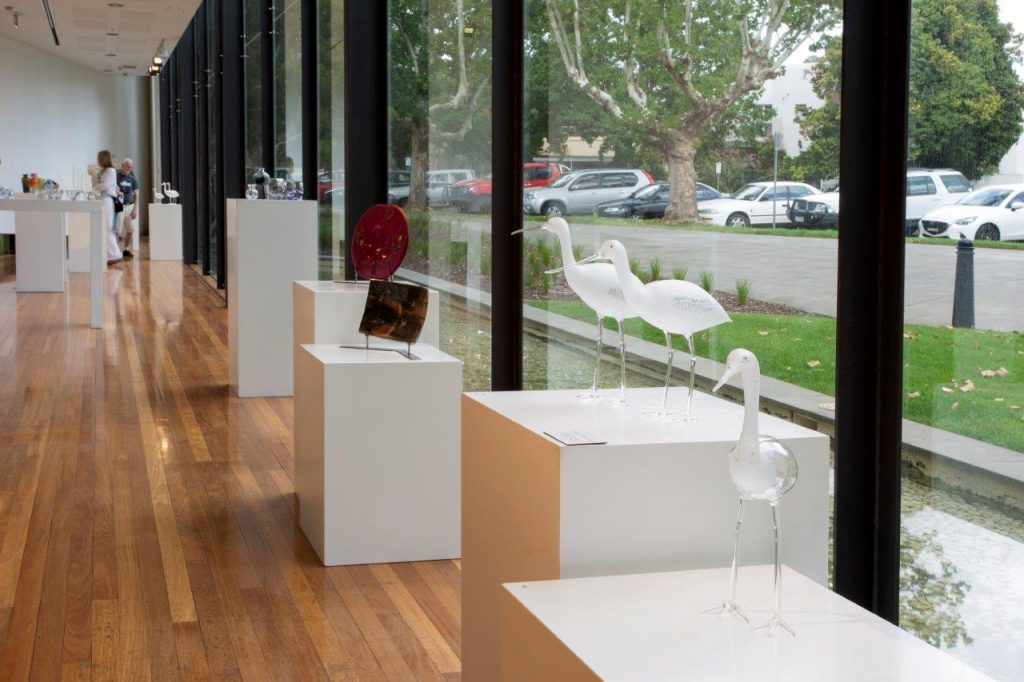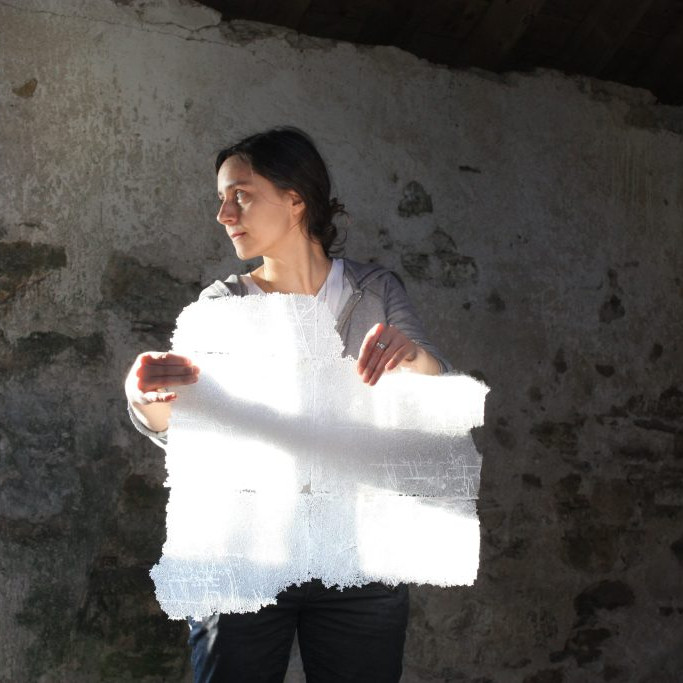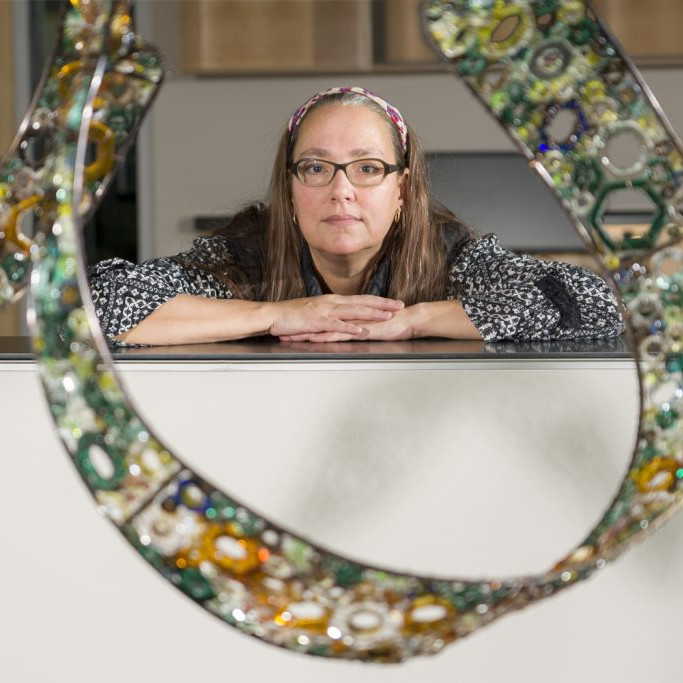Peter Minson Glass Artist
You are a third-generation glass blower. Did you ever consider another career away from glass?
As a 13-14 year old I would go to the factory in school holidays to earn pocket money and when I left school at 16 I started full time. At 19-20 years I was managing the production of medical and scientific glassware and 21-22 years, hire and fire as they say. Not something I liked doing, firing someone but required when needed. A fast learning curve at a young age of handling people and handling staff majority were women. Looking back, I was always going to be a glassblower and follow a family tradition.
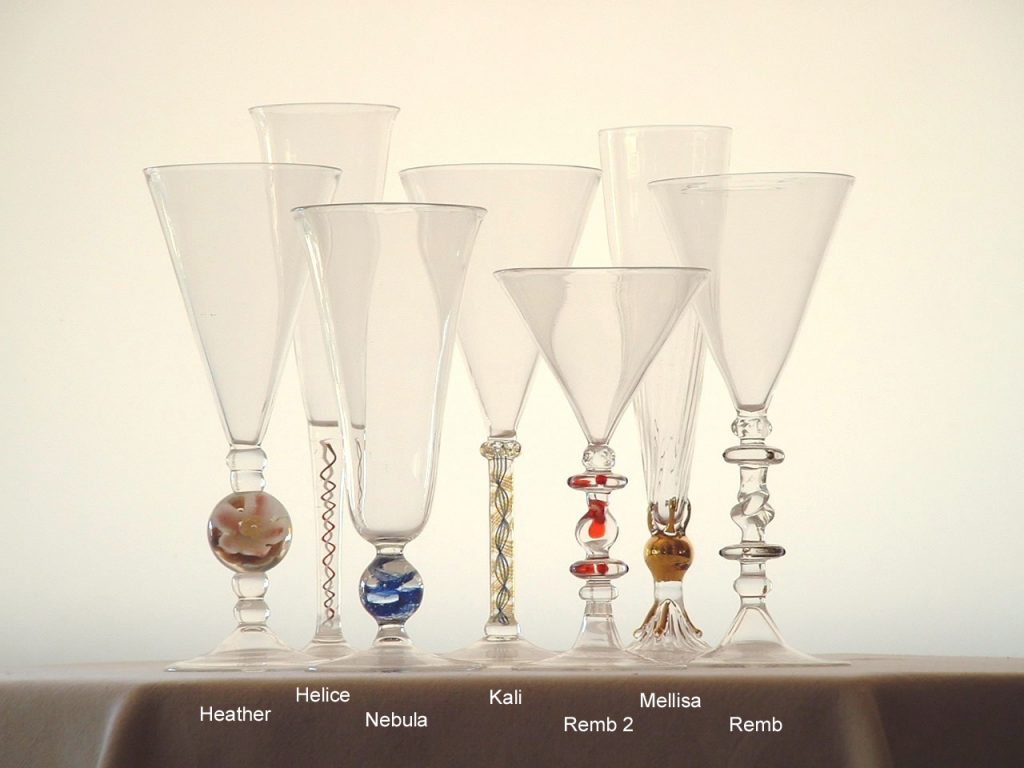
As well as your artistic glass blowing you sell glass and glass equipment from Italy. Why Italian glass and equipment?
As well as your artistic glassblowing you sell glass and equipment from Italy. Why Italian glass and equipment?
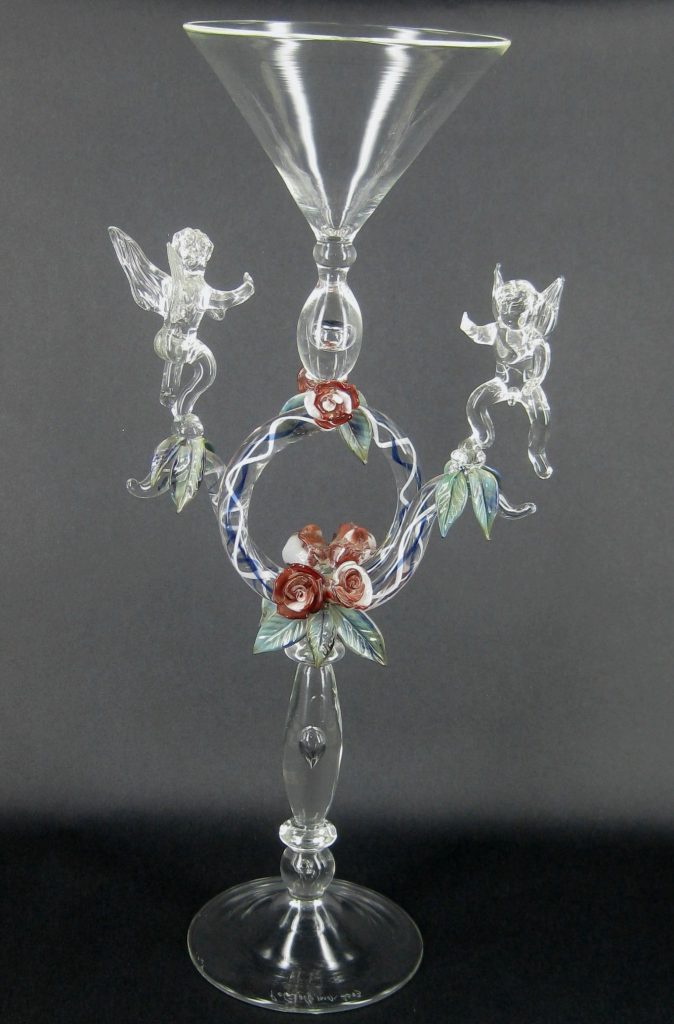
In the early 90s I was being asked to teach glass beadmaking sometimes in the Glass Department in ANU Canberra. The best glass for this was made in Italy, Venice on the island of Murano. I had written to the owners asking to import direct to Australia but they advised me to buy from their USA distributors.
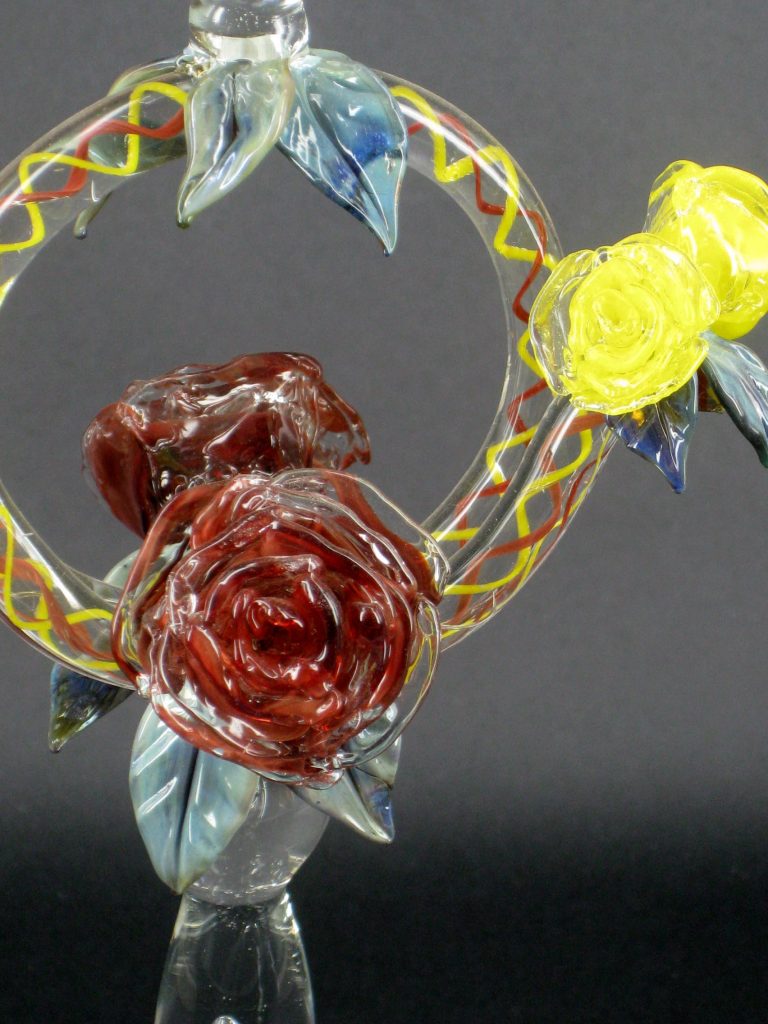
The best range of glassblowing torches, burners for Lampwork were made in USA. I was awarded a Winston Churchill Fellowship in 1995 so while away in USA I organized to bring burners, hand tools in from a supplier and while in Europe I made a point of going to Murano, organized a meeting with the owner and after a discussion they agreed to supply me direct into Australia.
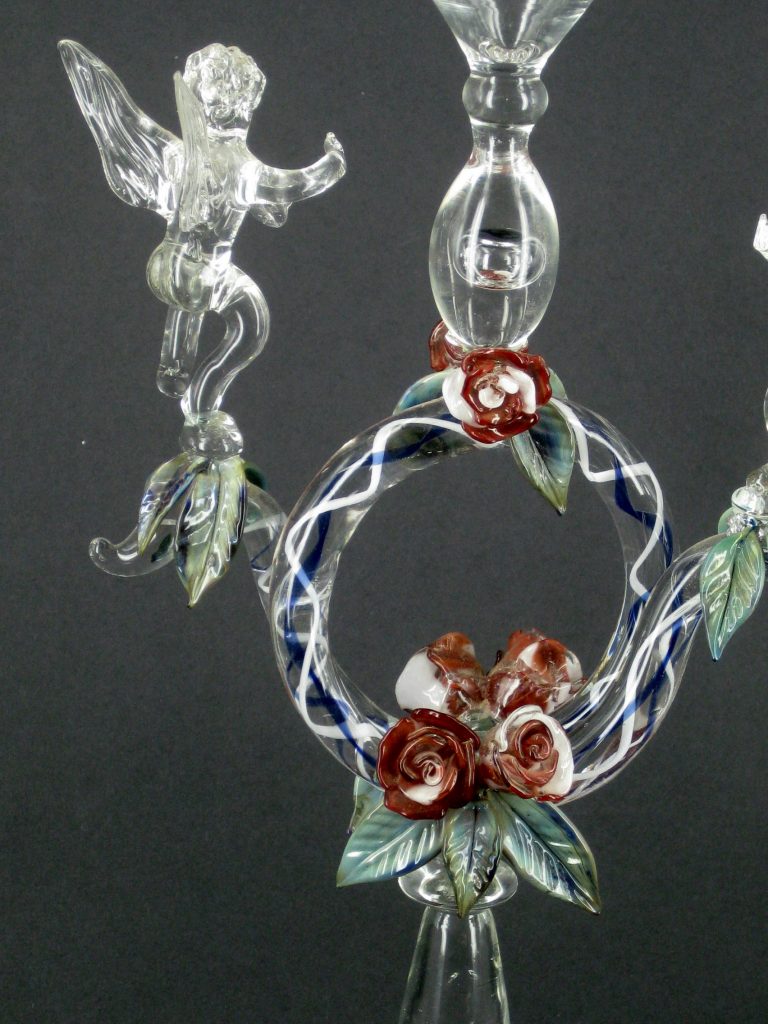
Explain about your Aventurine Chips and how they are used in glass blowing?
Aventurine is a form of Saturated Copper Glass. It comes in chunks and it is broken down into different size chips and powder. It comes in 3 colours, sparkling gold-brown, blue and green. It is used to decorate glass beads mainly giving the beads a sparkly look in surface treatment or when encased.
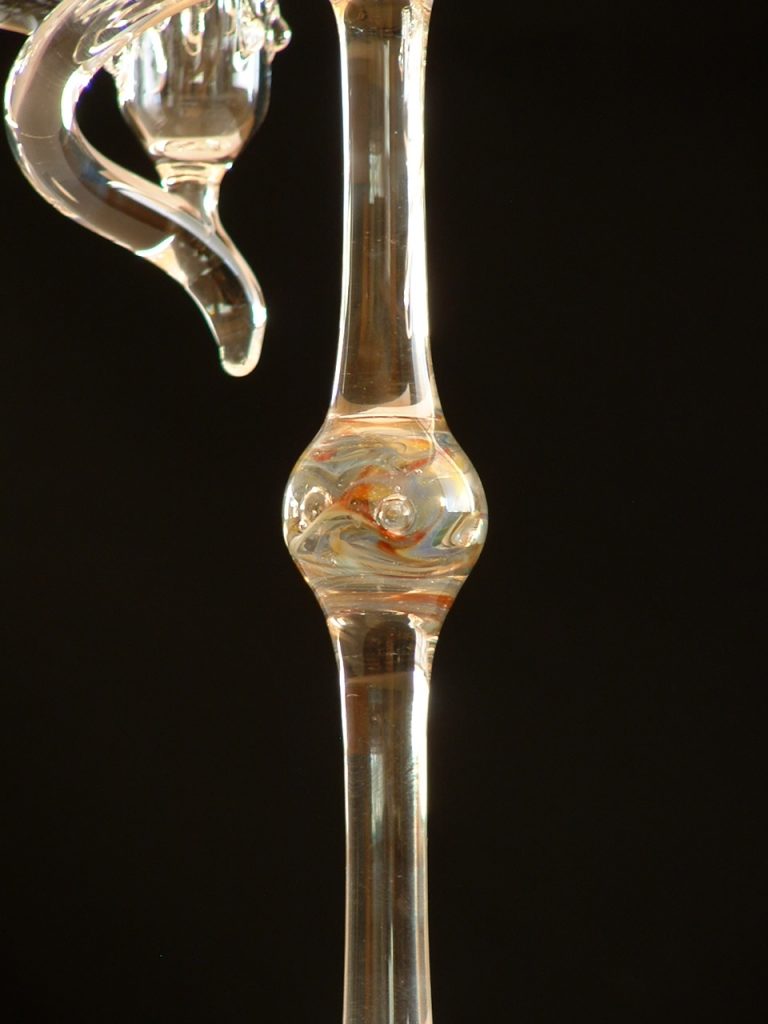
When the glass is molten hot, roll the bead, object over the aventurine chips which stick to the glass, reheat in the flame and it combines with the glass. To give depth a form of surface treatment, encase the chips with a layer of clear glass and melt in.
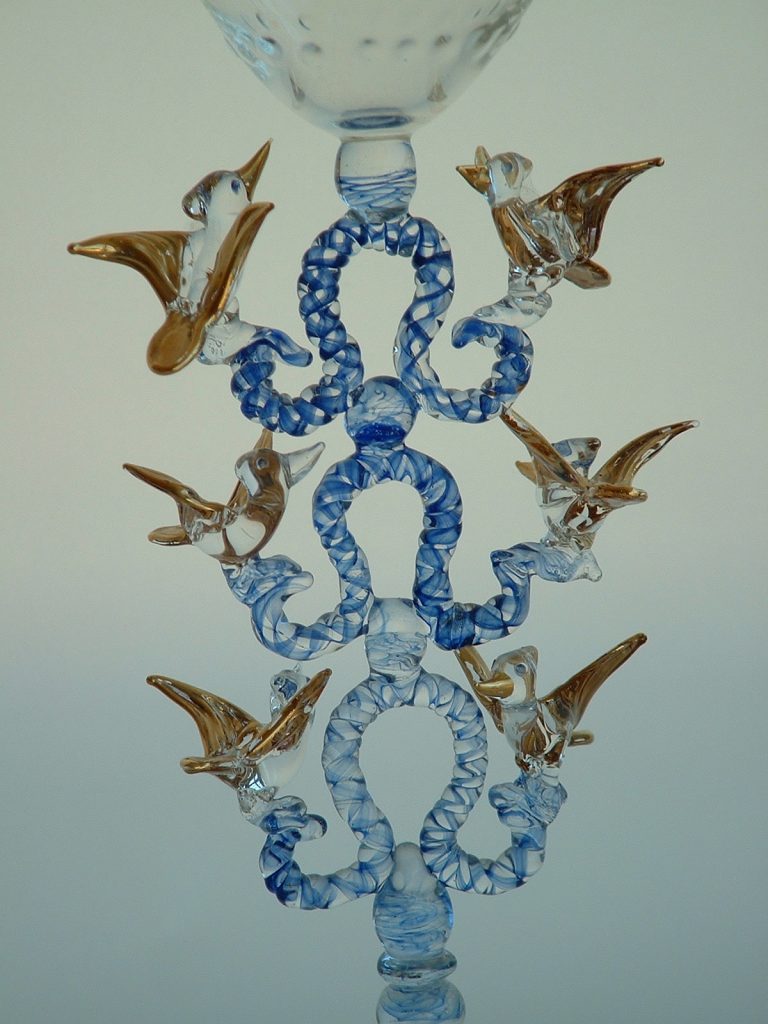
Explain about your work related to birds.
I have always like Birds mainly native birds, so colourful and interesting shapes and sizes. I decided to include them in glass items I made, on the stem of wine glasses, teapots, just free standing mostly trying to get their colouring correct especially showing the difference between male and female in the same breed such as Kingfishers. In 2002 I was approached by Niki Savvas an Australian Installation Artist working and exhibiting in England to make something in glass that would work with, complement her work in her next exhibition being held in London. It had to be something that had size and height and be simple. I came up with Birds, no specific breed just have good shape and height, long necks and legs, free standing in a number of positions. I made a sample, Niki liked it and commissioned me to make 12 and could I get them to England in 2 weeks time. They were successful and I was asked to make more for another exhibition and could they be the same with a bigger variety of stances and some taller. Most were around 500 mm tall and I managed to make some a metre tall.
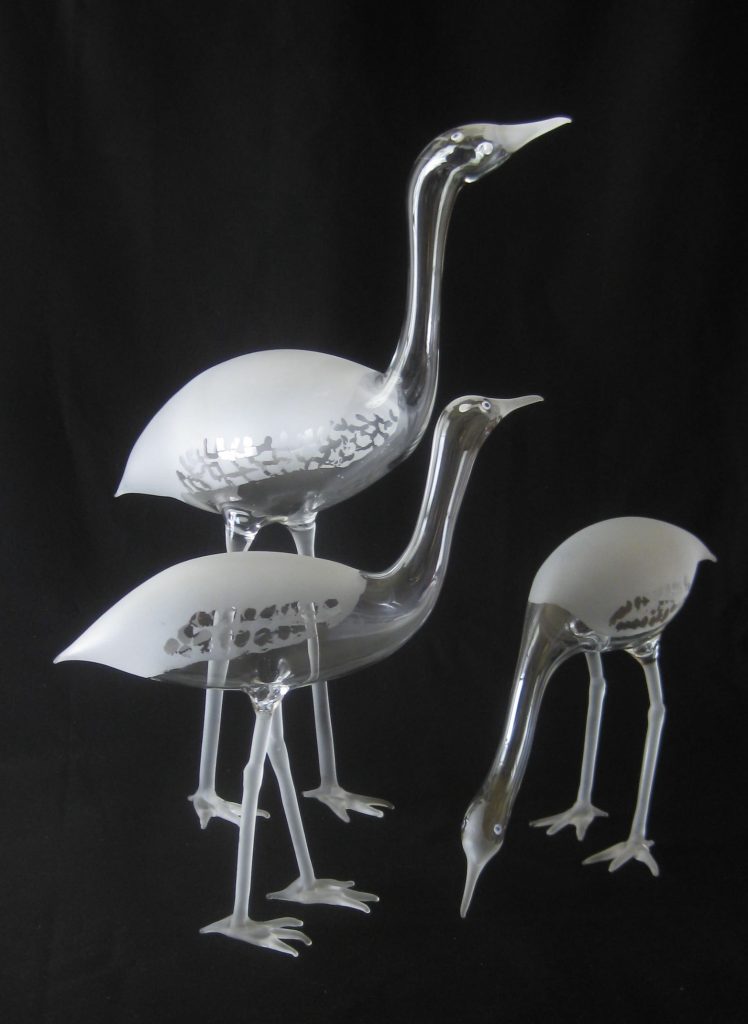
The birds are made free hand from Borosilicate tubing and rod. I work from drawings or photos of birds. I blow the body shape then heat a section to draw out blowing shaping the neck and head. I join onto the body the top section of both legs. Next I shape and seal the tail. Then I add the bottom section of the legs. I let cool then add the feet getting them in a position so the bird has a correct stance to balance.
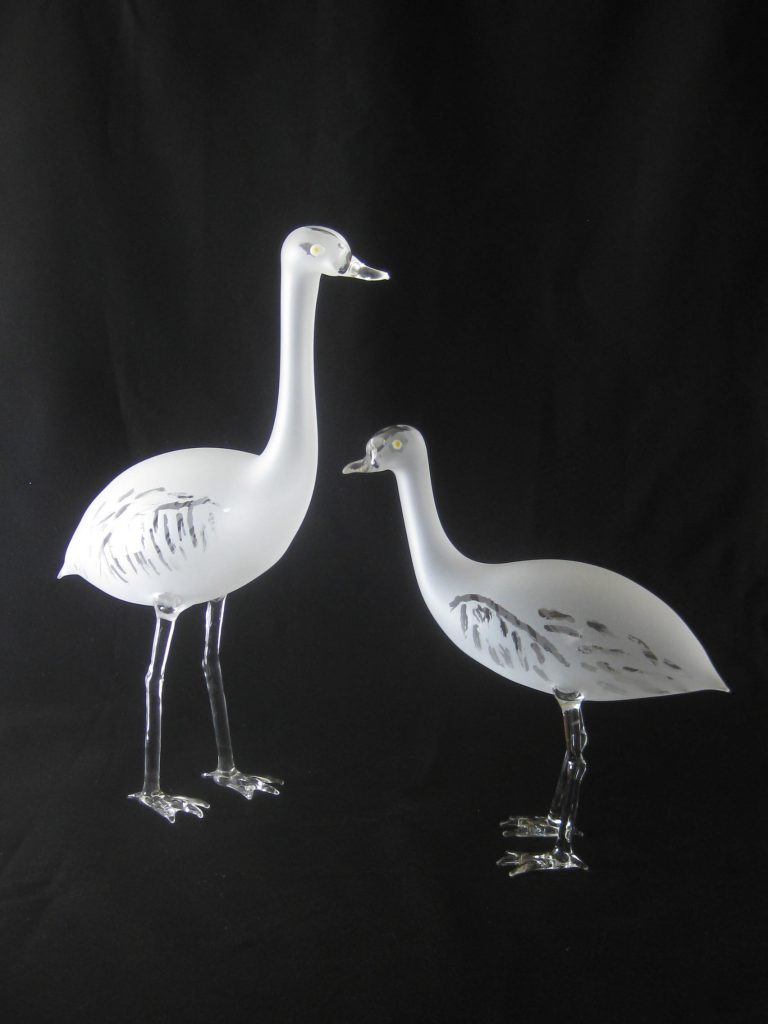
I live in Binalong country N.S.W. We are surrounded by birds, Magpies, lots of Parrots, Kookaburra, Sulphur Crested Cockatoo, Corellia, Wrens they are in our backyard in fact we are surrounded by them all the time.
Take two or three of your glass lamp pieces, discuss.
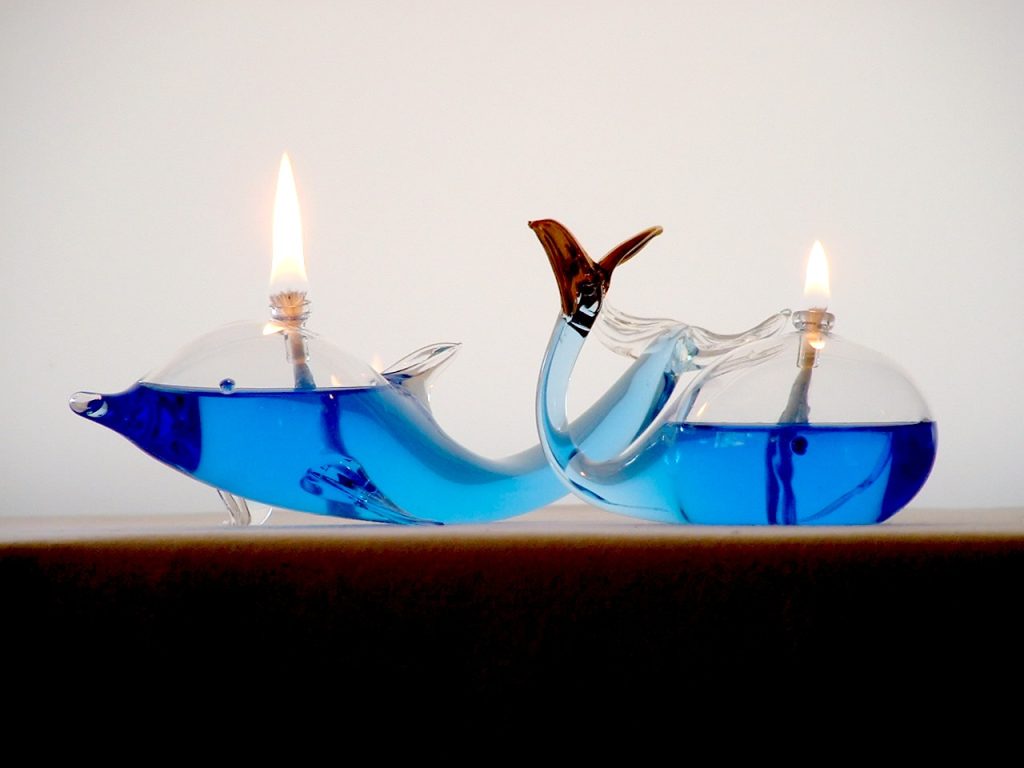
For many years I have made Oil Lamps as a variation on having wax candles on a table. It was a natural extension to make blown animals with a fibre glass wick filled with lamp oil could be used instead of candles. Dolphins and Whale shapes look good and appeal to people. They relate to them.
I found that adding a dye to colour the lamp oil added another dimension. Different colours appeal to different people so gives another selling point and attraction. They can see where it will fit into the decor in their house.
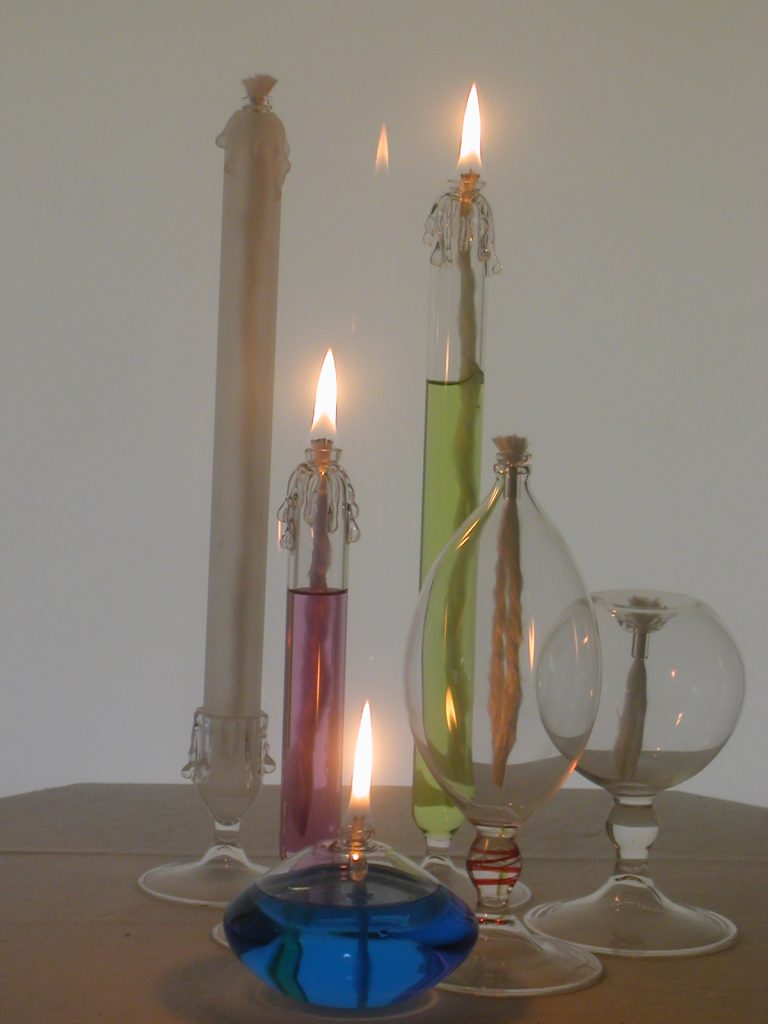
With particular animals such as Dolphins, Whales blue lamp oil attracts customers and complements the shapes. Our lamp oil is fragrance free, some people can’t handle fragrance and others like different ones. We suggest they can add a fragrance they like.
You have designed many teapots. Explain about this aspect of your work.
Over 30 years ago following on from a conversation with a few Potters about Teapots, the difficulty of making a good on that works well, I decided to see if I could make a Glass Teapot. Made from Borosilicate Glass ( Pyrex) which handles boiling water easily, doesn’t conduct heat very well should suit a teapot.
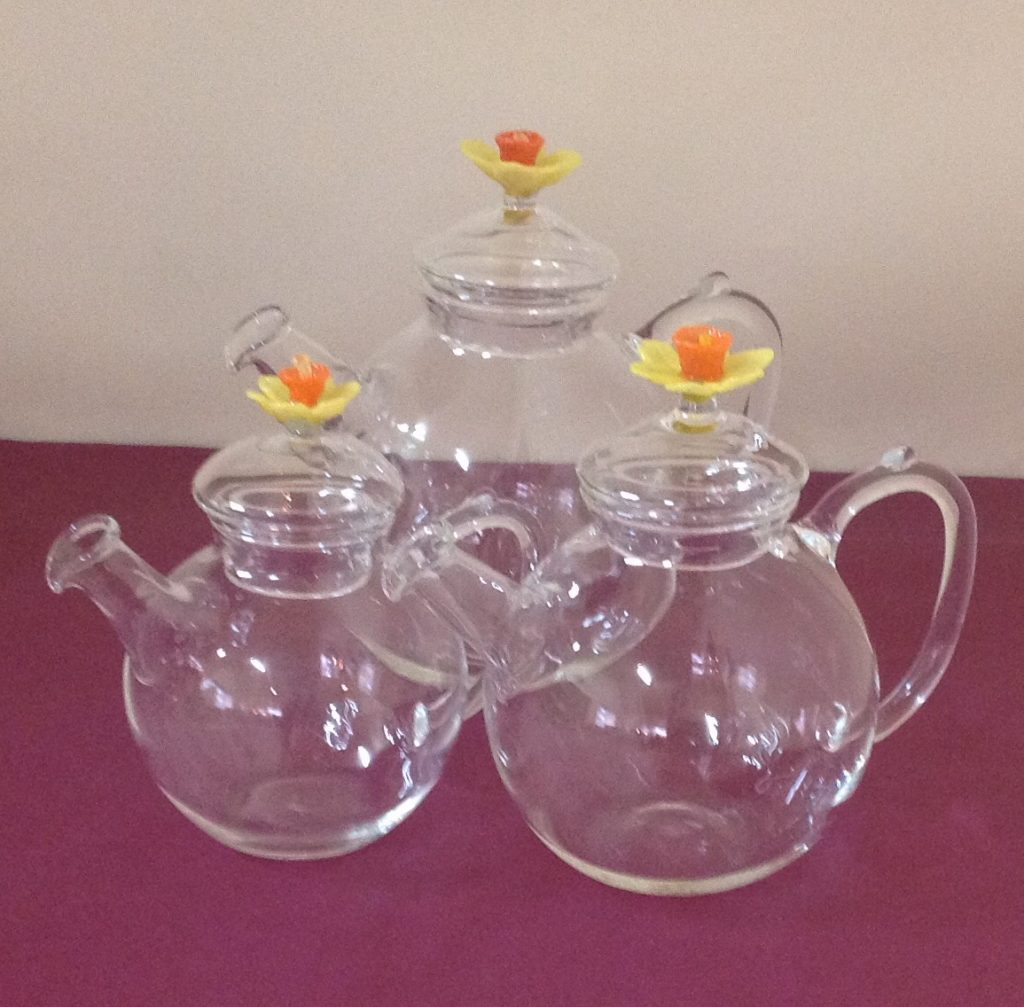
It took almost a year experimenting on shape and size. Making a spout that poured correct, doesn’t drip and then a lid that stayed on when pouring but was simple to make. Quickly I found out that size was important, the customer tells you this, how many cups of tea does it hold, does it pour well not drip, the lid fits and stays on. The handle stays cool so easy and comfortable to hold.
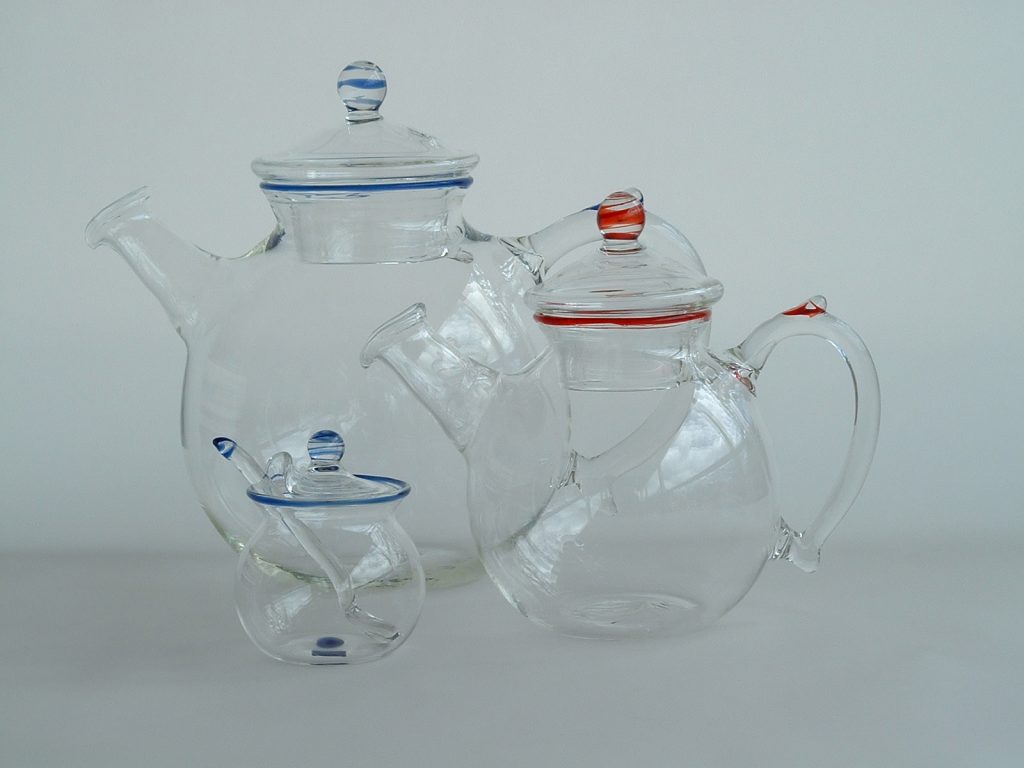
Over the years I have made variations on the shape but really the basic round slightly squat shape is most popular, customers relate to, and just a small line of a few colours, blue, red, green, black on the opening and lid satisfies most customer. We have a little Café here in the Gallery and use my Glass Teapots when serving a pot of tea. People love that we serve their pot of tea in a glass teapot I made and it works.
How have you worked on the beauty of stems in your glasses?
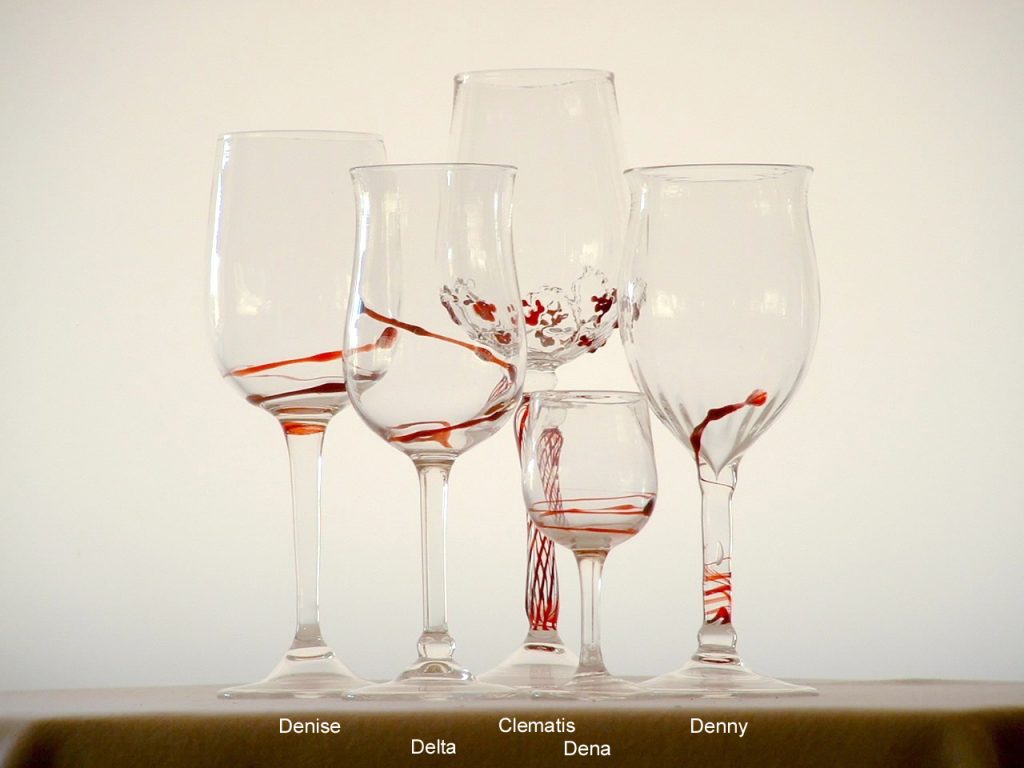
A wine glass is made up 3 parts, bowl, stem and foot. Each part must complement the other, balance to be good design. So in making a wine glass I think on what type, style of wine it will be used for. Reidel, an overseas glass company makes a different shape glass for every style of wine. So shape and size is important.
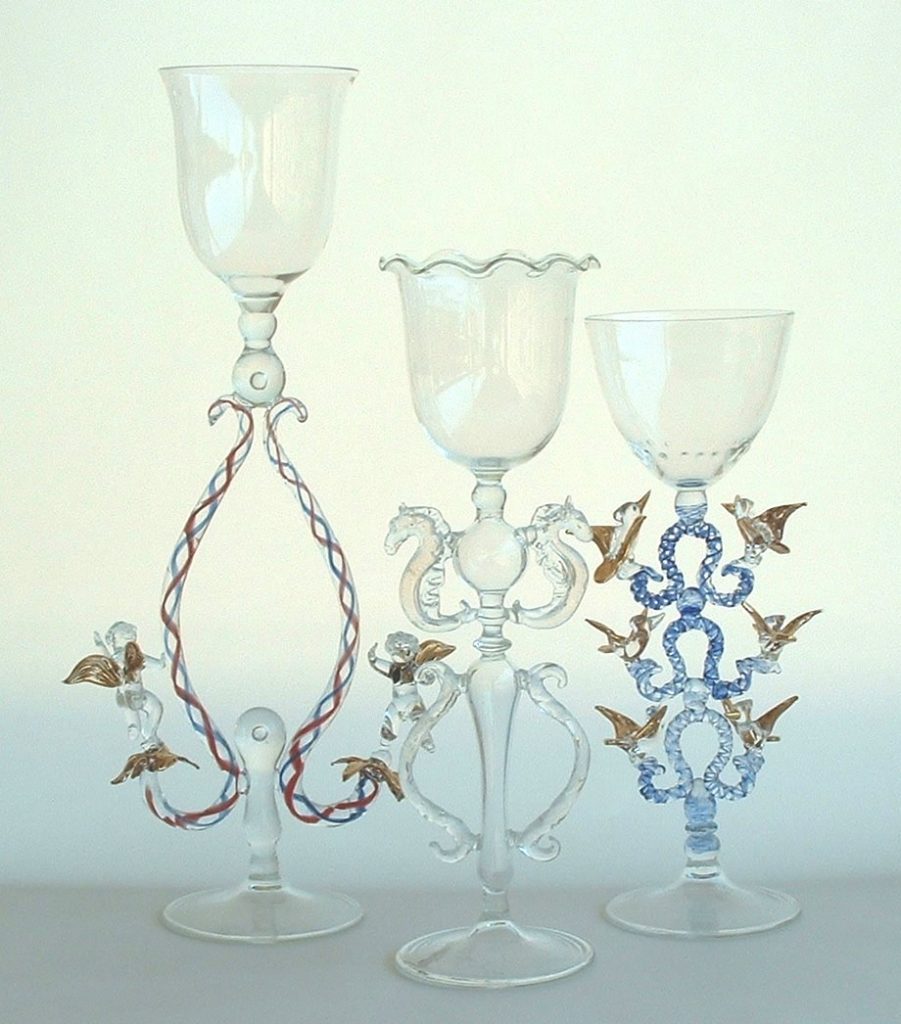
Adding a pattern to the bowl adds another dimension visually especially a pattern or colour. Serious wine drinkers like clear glass, no colour as it detracts from the colour of the wine however I have found if I use minimum colour, a simple line or fume the bowl with silver the reaction with the glass, light, sun shining on the bowl can react with the wine colour, bubbles and add to the enjoyment when using.
The stem allows me to experiment on shape and colour, still having to complement the bowl and foot. Looking at glass drinking vessels in books made over the centuries, can be very humbling and inspiring at the same time. Certain periods come to mind such as the English “Georgian Period”. Recently I did some work for the National Trust, they had a recent donation of a private collection of Georgian drinking vessels and I was asked to speak and explain at an exhibition they were showing. Very humbling to see the quality, styles and variations made so many years ago. In trying to equal those, challenges me, understanding type of stem, air twist etc and trying to replicate using a different type of glass working a different way and yet must look good and do the job. Getting the stem right is a big part of this.
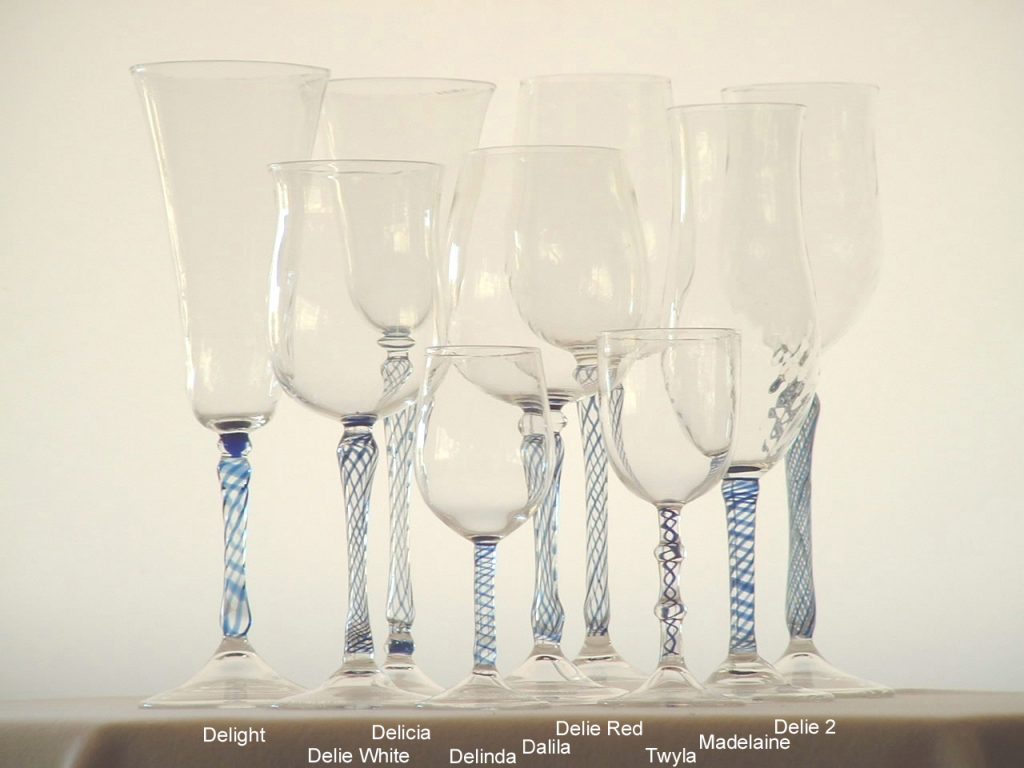
Finally making a foot to balance, complement the bowl and stem can make or break the design and so attract or distract from the Glass. Getting this right is as important as the other parts.
You still do classes. What have been a few highlights from your interaction with students?
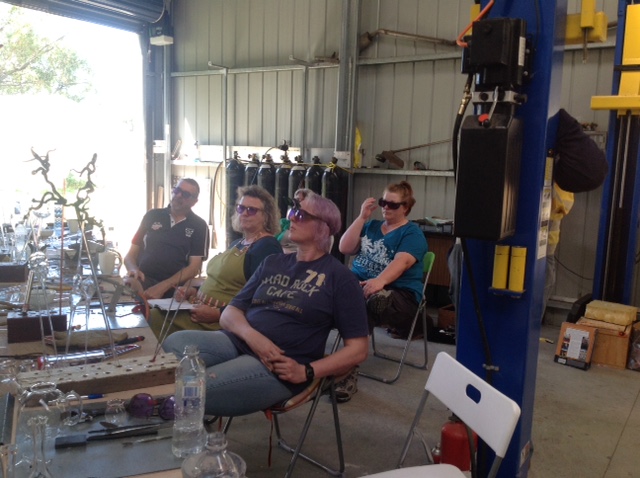
I love teaching, especially Lampwork. I get great enjoyment in teaching people to work with glass as I do with a bench burner, glass tubing and rod in either low temperature, soft soda lime glass or high temperature hard Borosilicate glass. To take someone who has never worked with glass especially Lampwork, to see them gain hand skills, glass knowledge and confidence to make their ideas, be creative and get good results, nothing better for the student and teacher. To see them having as much fun and enjoyment as I do each day is very satisfying. I have been doing this for a long time, worked in all areas and forms of glass, Lampwork, fusing and slumping, casting, engraving and cutting, building furnaces, making the glass to work with and then using it to make functional or art glass, always glass the best material, most challenging of materials.
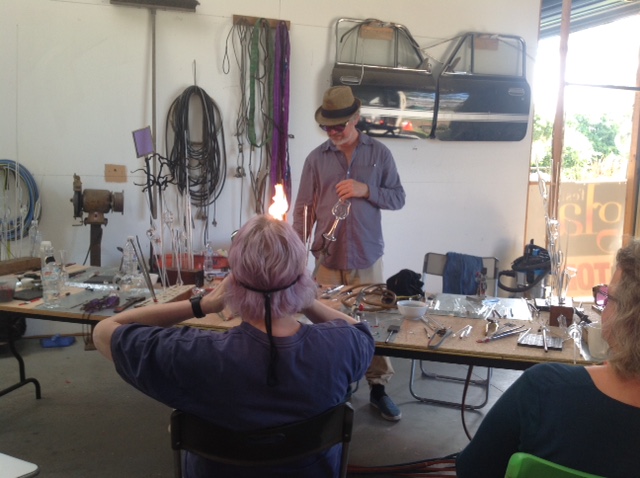
How as an artist do you relate to commissions?
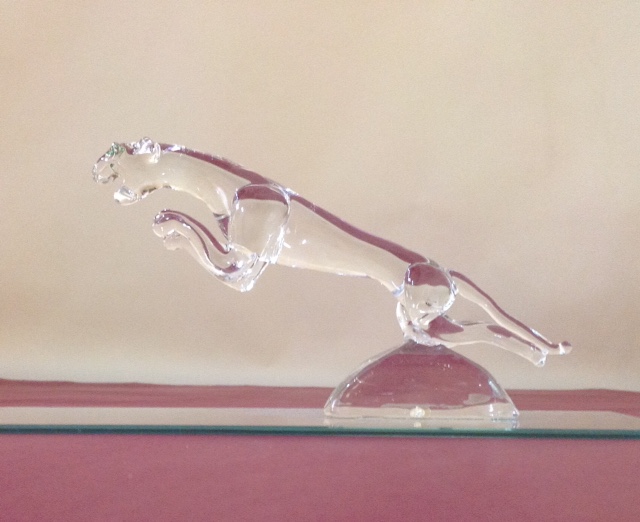
A commission is always a challenge. If the client has a drawing or photo of what they want makes it easier, but not made in glass and they want it in glass. If they don’t have either I have to understand what they want and why.
What I try to find out is what they don’t like be it shape, size or colour. Then I try to make what I like based on what we have discussed trusting I have understood enough to create something they like also. Luckily I have managed to get this right over the years.
Take a recent commission and explain the involvement between you and the client.
There have been a number of Commissions over the years, “International Riesling Challenge” Award, I have made these for 20 years, also a trophy for a one of game between the Aussie “ Matildas” and the N.Z “Silver Ferns” celebrating 100 years of creating the ACT and Canberra. Luckily the Australian women won and is proudly displayed in a cabinet with all the other trophies they have won.
The most recent was a trophy for a “Signing” group, a perpetual Trophy where the winner get their name and year engraved on the base and a smaller version for the winner to take home.
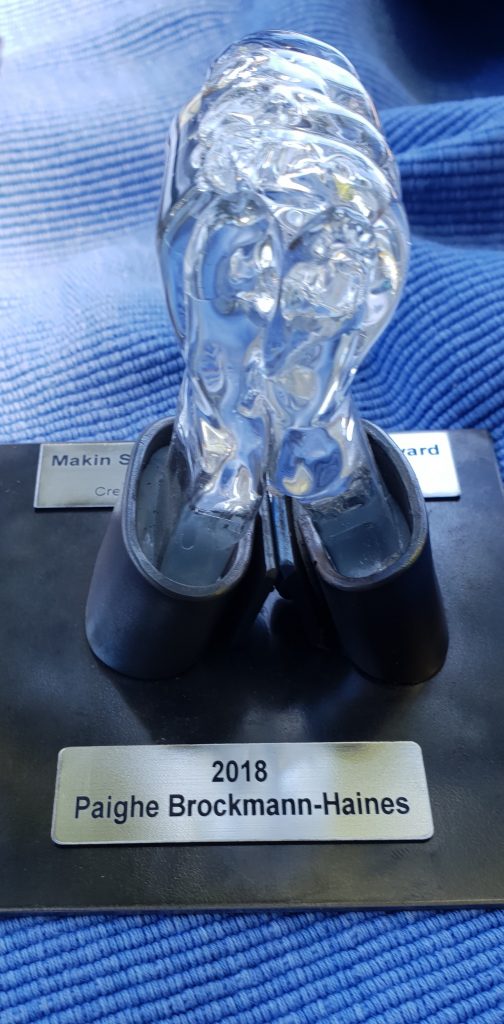
“Signing” is where a person uses hands to talk through hand and finger shape and movement. Firstly I had to understand what “Signing” was and the importance of the “Clasped Hands” symbol. My friend who works in Metal collaborated. Looking at what I had made in glass, clasped hands with wrists, he made “Shirt Cuffs and a Button”, my wrists fitted perfectly into his sleeves cuffs with buttons complemented and completed the trophy.
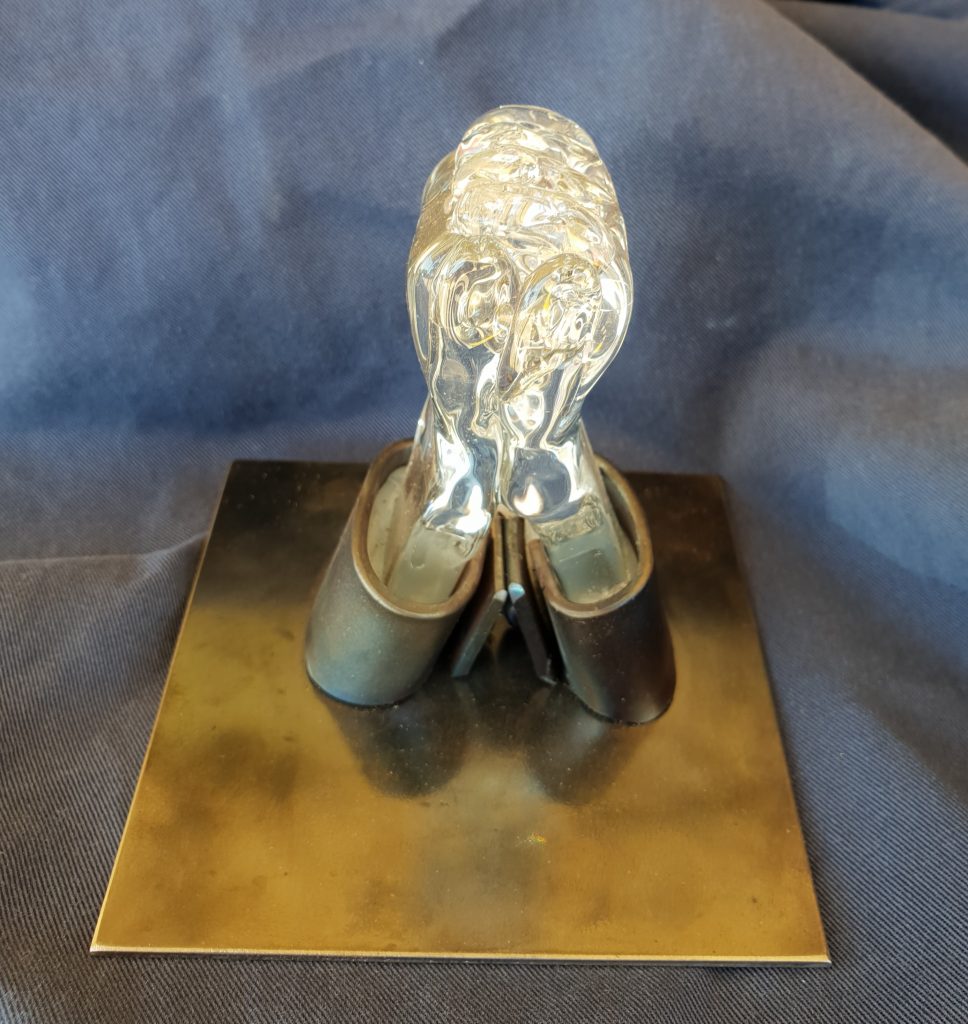
I was happy, he was happy and the Client very happy. Now each year hopefully we will get a repeat commission to make the smaller version for the winner to take home.
Recently you have had a retrospective at the Wagga Glass Gallery expand:
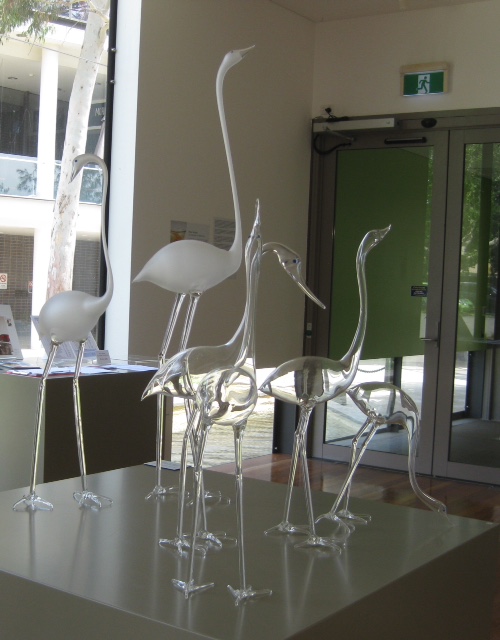
Your involvement with the Gallery
In 1981 Wagga Wagga Council advertised they would be holding an exhibition to showcase Australian Art Glass. They advertised nationwide and attracted entries from all over Australia. I received an entry form and sent some of my furnace work which I was making in ‘The Paris Creek Craft Workshops” S.A. My work sold to private collectors. In 1982 they ran another exhibition and this time my work was purchased to be included in the newly established National Art Glass Collection.
The value of glass to Wagga
In 2016 I was asked to open the exhibition celebrating 35 years of the National Collection”. I spoke to those attending how I saw the importance of establishing Collecting Art Glass in the early days for the Art Glass movement in Australia, and how over the years by adding to it had given it importance to desire to everyone working in glass to develop their work to international standard be equal to Art Glass made anywhere in the world and maybe become part of the Collection. This has happened and Australian Art Glass is equal to anything made overseas.
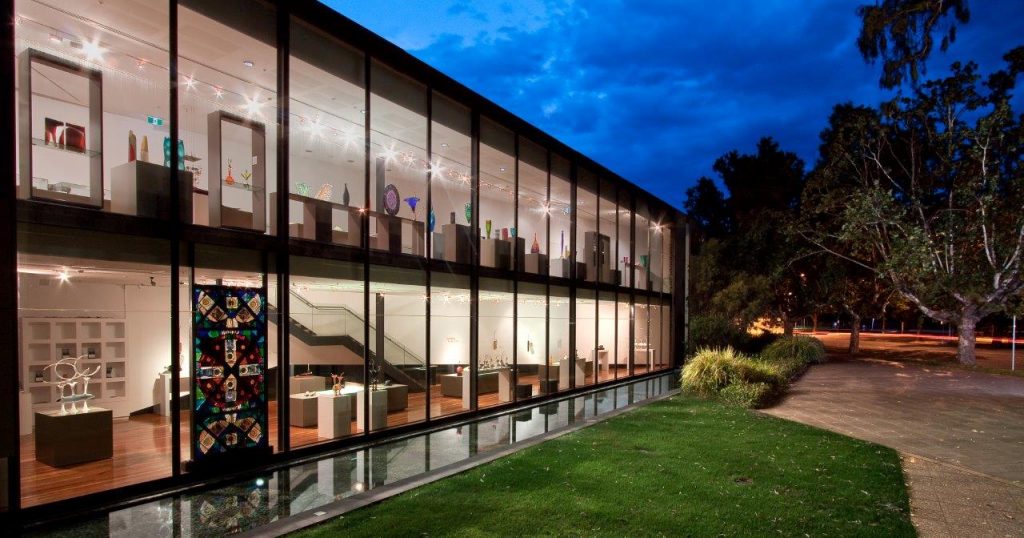
With my official duties done I spoke to the Mayor thanking the Council for supporting the Glass Gallery from inception. The Mayor assured me they would always support the Collection. Every year at budget time they have a meeting to decide where they will spend their funds initially looking at 5 core sections first and after that money goes to other areas as decided on need. In those 5 core sections each year the National Glass Collection Gallery is always 3 or 4 in importance to Wagga Wagga just in the number of tourists that come to see the collection from all over country and from overseas means they will always support the Gallery.
How did the Regional Gallery establish it connection with glass?
Back in 1978 a number of people started an organization called Ausglass to give a place for people working in glass a place to meet and talk about glass. In 1980 2 people who lived in Wagga Wagga had noticed the beginnings of this Art Glass movement, one John Elswood the other Judy Le Livre and decide to hold an exhibition to celebrate this. The first exhibition was in 1981 and work exhibited purchased by the Council and newly formed “Friends of the Gallery” and donated back to the Gallery were the beginnings of the Collection.
Contact:
Peter Minson
peter@minsonartglass.com.au
Deborah Blakeley, Melbourne, Australia
Interview by Deborah Blakeley, February 2020
Think a colleague or friend could benefit from this interview?
Knowledge is one of the biggest assets in any business. So why not forward this on to your friends and colleagues so they too can start taking advantage of the insightful information the artist has given?
Other artists you may be interested in:


